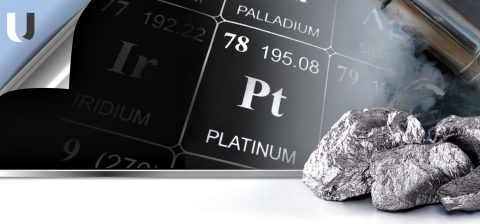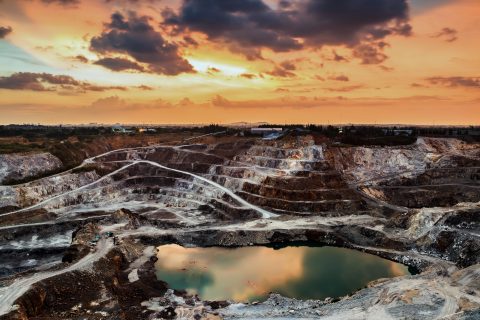SA Mining
PGMs – Mining Isn’t Just About Rocks
Ever wonder what we as South Africans are really good at? No, it’s not rugby, although sometimes we are, like when we won the World Cup in Japan. No – it’s mining, particularly platinum group metal mining. It’s deep, it’s dangerous, and it’s costly, but it’s worth it, when you find the right stuff safely. And we hold about 80% of the world’s PGM resources in our own backyard.
The bulk of the PGM products are used for catalytic converters in the auto industry, but they also have applications in the medical and pharmaceutical, aerospace and defence, petrochemical and food industries, just to name a few.
Where’s the magic?
The use of PGMs in proton exchange membrane (PEM) and fuel cell electric vehicle (FCEV) technologies offers South Africa a unique opportunity to demonstrate global leadership and expertise in these fields.
Furthermore, the combination of current geopolitical factors and the inauguration of a climate-friendly Biden administration, the realities of a post-Brexit world, as well as global recovery from the impacts of COVID-19, have created a “perfect” storm for commodity prices.
They are positively surging to record highs – platinum is in the region of $1 172/oz, rhodium is approximately $29 200/oz and palladium is in the region of $2336/oz. Some commentators are of the view that a super cycle has already started. Either way, South Africa’s PGM industry is well-positioned to take advantage of current circumstances.
There is also the global demand to decarbonise the mining industry; to factor in renewables and implement environment, social and governance (ESG) principles. This of course puts increasing pressure on local and international players to comply, while also focusing on operational excellence, stakeholder management and financial profitability.
There are now some 81 countries developing or who have completed studies looking at hydrogen strategies. That’s future-focus on a country scale. The European Union has committed itself to zero-carbon emissions and 32% use of renewables by 2030 in its energy mix, and aims to achieve climate neutrality by 2050.
The United States is now not far behind, as it has reaffirmed its commitment to the Paris Climate Accord. In addition, China has indicated that it intends to be carbon-neutral by 2060, and that 25% of its primary energy mix will be non-fossil fuels, i.e. renewables plus nuclear, by 2030.
Mining is a complex mix of art and science, and individual companies will have to effectively engage with the technology and strategic options that the hydrogen economy has to offer.
Initiatives already under way:
- As early as 2007, the South African government approved the South African National Hydrogen Energy and Fuel Cell (HEFC) R&D Strategy– this will need to be updated, however, since significant advancements on groundwork have been done.
- In June 2020, the German Federal Government invested €5.7-million in developing the Green Hydrogen Atlas – Africa project, which will help African countries, including South Africa, to define its hydrogen roadmap. Green hydrogen (as opposed to blue, which originates from oil and gas, and brown which comes from coal) is derived from using PGMs as a catalyst for electrolysis in which water is split into hydrogen and oxygen. Green hydrogen is also the variant used in PEM and FCEV, and may be a product where South Africa has a comparable, competitive advantage.
- Many of SA’s PGM producers are part of the Hydrogen Council (e.g. Anglo, BHP and Shell are members).
- Investment funds have also been established – this includes the AP Ventures Fund, which has investors including the Public Investment Corporation (PIC) of South Africa, Anglo American Platinum, Mitsubishi Corporation, the Toyota-linked Mirai Creation Fund, Plastic Omnium and now also Sumitomo Corporation, generating capital that can be used for various hydrogen projects.
- Some South African companies have already improved the electrolysis process using iridium as the catalyst rather than platinum or palladium.
- Where it gets really interesting is where mining companies start to substitute or supplement electricity supplied by Eskom, with their own energy production. For example, by using renewables such as solar or wind energy, and using excess electricity to split water into hydrogen and oxygen (allowing hydrogen to be used as a clean fuel source). Recently, Goldfields received authorisation for its 40MW solar plant at South Deep, and Sibanye is planning a 50MW renewable programme for West Wits (near Libanon mine) and a 200MW setup for its operation in the North West. Sibanye is currently conducting further analysis to determine its hydrogen strategy going forward.
Enlightened self-interest?
The global race to make hydrogen work as an energy source is on. It’s a unique opportunity within the mining sector in general, and the PGM industry in particular, to lead and deepen these and other initiatives by formulating and implementing the right strategy at national, industry and individual company levels.
It is critical that technology choices are data-driven, that appropriate policy interventions are prioritised and that ESG-led monitoring and measurement frameworks are put in place. What’s more, collaboration is key – partnerships need to be established in order to drive success.
It is not often that you get the opportunity to redefine the energy base of an industry or an economy. Developing the hydrogen economy, centred around our PGM mines and technologies, could be a breakthrough moment for our country. It is so innovative and disruptive, it might even be interesting enough to tempt Elon Musk to lend a hand.








 Sign-up and receive the Business Media MAGS newsletter OR SA Mining newsletter straight to your inbox.
Sign-up and receive the Business Media MAGS newsletter OR SA Mining newsletter straight to your inbox.